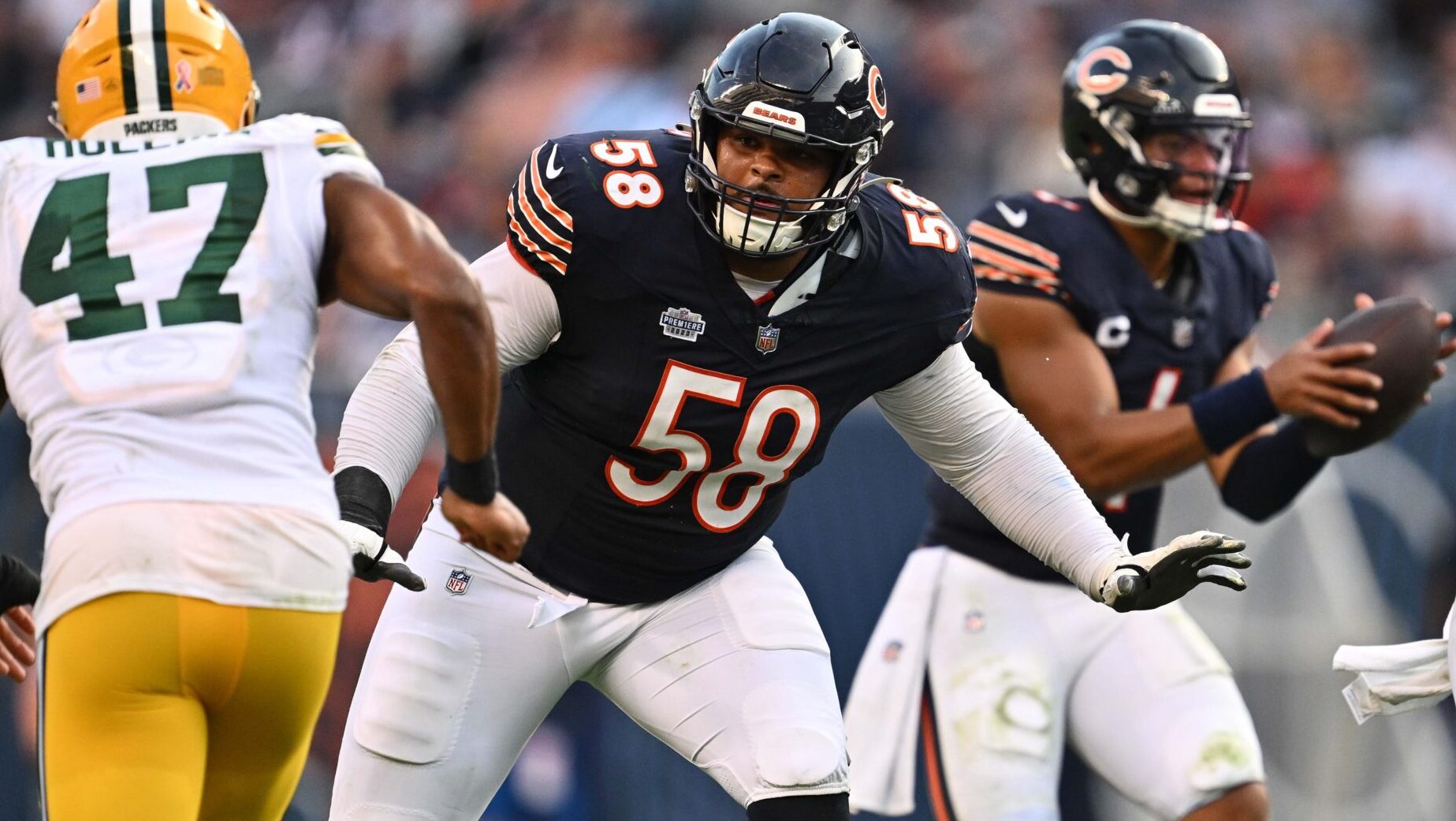Analysis
7/19/21
8 min read
What Would the Format of a New NFL Expansion Draft Look Like?
With all the talk about this week’s NHL expansion draft for the Seattle Kraken -- and specifically whether the generous format could lead to another Las Vegas Knights-esque run through the playoffs -- it got us at the 33rd Team thinking about what a modern-day expansion draft would look like in the NFL. The league office would have a vested interest in creating a team that could be at least competitive off the bat, so they’d likely try to fall somewhere closer to the rules that were in place for Carolina and Jacksonville when they entered the league in 1995 (and had five combined playoff appearances in their first five years) than for Cleveland or Houston (one combined playoff appearance through five years and only five wins each per year).
Although we’ve seen eight expansion drafts in the NFL’s history, we’re nearing the 20-year anniversary of the most recent -- the Houston Texans’ 2002 entrance. The Texans were at the end of a great period of expansion for the league, with three expansion drafts and four new teams in a 7-year span.
What did the process look like? Every NFL team listed five players that Houston could select, not including punters, kickers or impending free agents. To prevent teams from simply attempting to dump veterans, each team could list only one player with over 10 years of experience. The Texans then were required to claim either 30 players or $27.2 million in contracts (38% of the salary cap at that time), with the interesting caveat that teams could update their list as the draft progressed. In other words, when Houston chose a team’s player, that team could opt to protect a player from their list. If a second player was selected from that team, they could remove the rest of their list from contention. Houston was not allowed to select a player just to trade him back to his original club. As extra compensation during the normal NFL draft, the Texans were given the first draft pick in each round in addition to a middling draft pick in all Day 2 and Day 3 rounds. Depending on their record in the 2002 season, they could also be given up to seven extra picks in the 2003 NFL Draft, though none would be in rounds 1 or 2. Finally, they could hold several more players on their roster through the offseason and three extra players through the third week of the regular season.
These rules were generally similar to each of the prior two expansion drafts, with teams required to expose five players to the Browns and six to the combination of Carolina and Jacksonville, with each expansion team picking a minimum of 30 players. Even though the 1995 expansion draft included two teams making selections, only 168 players were available compared to the 150 and 155 available to Cleveland and Houston respectively, but Carolina and Jacksonville were automatically awarded 14 extra draft choices over two seasons, including in the first and second rounds of 1995. With the salary cap and free agency brand new and the highly capable leadership of Bill Polian and Tom Coughlin, respectively, the Panthers and Jaguars were so successful that the draft pick restrictions were introduced for the next expansion teams, as well as the ability to expose injured or retiring players.
Polian attributes much of Carolina’s early success to aggressively utilizing free agency to find scheme fits, especially considering their expansion rules requiring little to no cap requirement. The Panthers took 35 players in the expansion draft, but only one that made over $1 million the following season (1,000-yard receiver Mark Carrier). With starting QB Kerry Collins selected in the “normal” NFL draft with the fifth overall selection, the Panthers signed a whopping 14 key free agents that would start at least seven games in a season for the team as well as provide valuable veteran leadership to a new team. Specifically, these key free agents included Sam Mills and four other LBs, three RBs/FBs, a pair of WRs, and one OT, TE, DT and K. The Panthers and Jaguars both were able to reach a conference championship game by their second season, with Carolina in particular setting records for the most victories by an expansion team (7) with a four-game winning streak and a 5-3 record at home, each of which are also league firsts for an expansion team.
Although Polian believes the early success for both Carolina and Jacksonville is a net positive for the league, he does note that the easiest way to handicap an expansion team would be to raise the minimum salary cap requirement for a team and that the free agency-based model he employed doesn’t give a long-term advantage to the expansion clubs – when the veteran contracts expired in only a few short years, sustenance of excellence would be hard to do. Indeed, Polian’s 1998 hiring as the GM/President of the Indianapolis Colts coincided with the expiration of those veteran contracts. The Panthers bottomed out, failing to reach the playoffs again until 2003 and even going 1-15 in 2001. Although Jacksonville managed to sustain success for comparatively longer, with four consecutive playoff appearances, the 2000 season saw a rash of injuries coincide with a tight cap situation ($31 million over), failing to reach the playoffs again until 2005.
How does this compare to the rules in play for the Seattle Kraken? Existing NHL teams (with the exception of the Las Vegas Golden Knights, who are exempt) have the option of protecting seven forwards, three defensemen and a goalie OR they can simply protect eight skaters and a goalie. Furthermore, all first- and second-year NHL players are automatically exempt, but the remaining rules are much more favorable to the expansion team. Each team has to expose at least two forwards and one defenseman who played at least 40 games last season or 70 games over the prior two seasons, as well as at least one goalie who is under contract through next season. Seattle can only select one player from each team, but they are given an exclusive negotiating period with all unprotected pending free agents, although any signings will count as that sole selection. Players with no-trade clauses can be exposed, but those with no-movement clauses can’t be, a function that was particularly notable in the Golden Knights’ expansion draft -- when teams sent Las Vegas three first-round draft picks and several veterans to avoid losing certain unprotected players. By the end, Seattle’s roster has to have a collective cap hit of at least $48.9 million (60% of the salary cap ceiling).
So what would a potential NFL expansion draft look like? The league would likely keep a similar structure to the 2002 Texans expansion draft, exposing five players per team with updating lists when players are selected, but would certainly have to restrict the addition of injured or retiring players to the available player pool. Furthermore, the league could decide to revert back to the Carolina/Jacksonville style of first-year college draft selections, giving the first and last pick in each round to the expansion franchise, but retaining the restrictions on the second-year extra draft-selections (based on the year-one performance).
With the explosion of skill-position players in the draft due to a strong grassroots movement for 7-on-7 football, offensive linemen are relatively more important in 2021 than in 2002, potentially forcing the NFL to introduce a stipulation that at least one OL must be exposed by all teams.
Polian is a fan of the NHL’s position-specific rules, mandating the number of players at each position that end up in the player pool. While this couldn’t be achieved by a strict mandate for every team, it is possible to create a well-rounded available player pool by creating restrictions by division or conference, or even by negotiating with individual clubs.
What other tips does Polian have for an expansion team? You need to make a determination of what offense and defense you want to run, then select players that fit that scheme, he said. Polian quoted Bill Parcells in saying, “We’re captive of what the colleges send us.” In today’s game, that speaks to the predominance of the spread offense. With this, it’s harder to play certain schemes right away.
For example, not many offensive linemen can do more than zone block, but it’s possible to find people who can pass block. From the perspective of the existing teams contributing to the player pool, what you’re really focusing on is “Who are we required to put in?” and “How does it affect us?” You have to presume the worst, specifically that your players will get taken, but remember that no NFL team is ever one player away and instead needs 12 good players to win a Super Bowl.
Although discussion in the NFL around new teams seems to be more focused on the movement of existing clubs than expansion, lower-than-expected revenues in 2021 and 2022 could have the league looking to create fan interest (and manufacture a multi-billion-dollar expansion fee). It’s a delicate balance to weigh the early success of an expansion team against the deconstruction of the existing member clubs, but the NFL has repeatedly shown the ability to turn an increasing profit when faced with these decisions.
As Polian has shown, every rule set has areas of opportunity; well-thought, calculated analysis can find the best strategies to build a winner.








